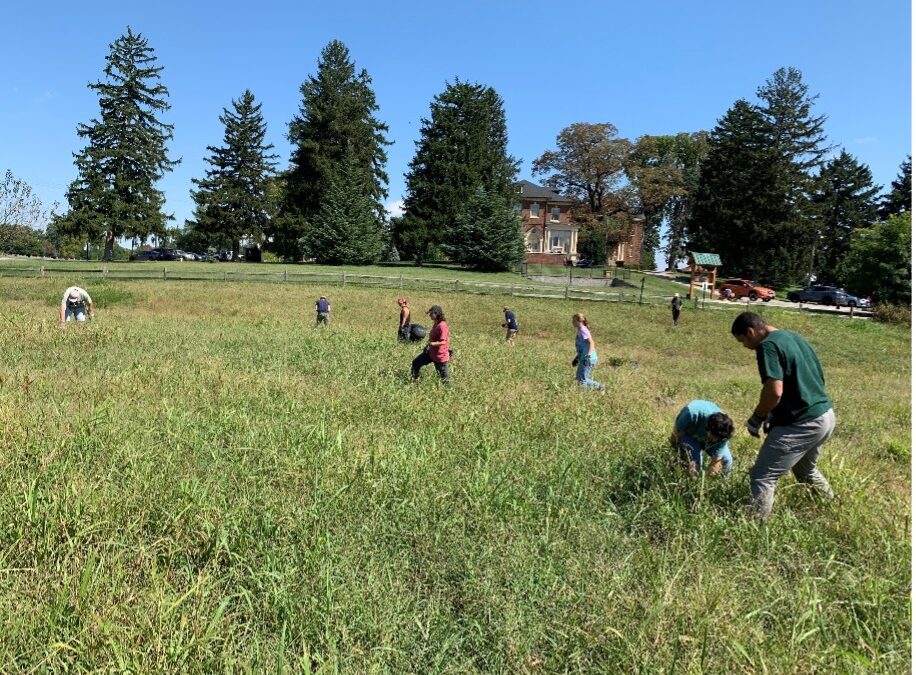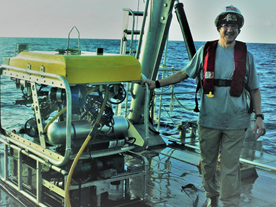Is Survey123 on your radar? {Research & Teaching Resource}
January 26, 2023KEYSTONE Inspirations, stories, and resources from our ecology community
From Degraded and Invaded to Restoration and Native
An interview with Rachel Collins
January 7, 2025
“We are living through a time of upheaval and uncertainty in higher education. Those of us who teach ecology and related courses to undergraduates are not immune to this evolution. How do we find a path where our careers and lives flourish in the current environment? We find ways to provide meaningful experiences for undergraduate students and for ourselves.”
–Rachel Collins
Rachel Collins is a Professor of Biology at Roanoke College in southwest Virginia. Rachel is a mid- to late-career ecologist who, along with fellow faculty and students, was instrumental in establishing the Roanoke College Environment Center.
Learn more about the vision and creation of the Roanoke College Environment Center (EC), as well as the meaningful experiences provided by the EC for undergraduates, in Rachel’s interview below.
Will you explain the niche that the Roanoke College Environment Center (EC) fills?
Roanoke College is a small liberal arts college with the Appalachian Mountains outside our door. Our location attracts students who are interested in the environment and outdoors activities. While we have several lab classes and research opportunities for students to get outside and study the soils, forests, and streams of the region, the college did not own any land for field work. This restricted the kinds of activities students could do. The Environment Center was created from a degraded, underused area of campus about 10 acres in size in January of 2021. At the EC students could get their hands dirty in environmental restoration and other work.
So, the EC is relatively new. What is the EC’s origin story?
In the Fall of 2020, our Environmental Studies seniors, in their capstone course, came up with the idea of taking this corner of campus and turning it into an interdisciplinary space for environmental work. The area included a fill site, a woodlot, storm water swales, and some mowed lawn. The fill site is where a demolished building from main campus was buried. The soil is poor quality and highly compacted, and only sparsely vegetated. The woodlot was a former residential lot that is overgrown with invasive and ornamental trees, shrubs, and vines. The stormwater swales were built when the fill site was created and it is also dominated by invasive species. The students’ idea was to do environmental restoration on the area.
A small group of faculty liked their idea so much we started working on making it happen. We developed a plan and pitched it to the academic dean. He liked the idea so much, the next week we were presenting our idea to the college president and his leadership council. Then we were asked to share our idea with the Board of Trusties Buildings and Grounds Committee.
We were asking for permission to use this area from now into the future. In other words, the college would not do something else with the area. Not only did the board of trustees support our idea, two of them donated seed money to get us started.
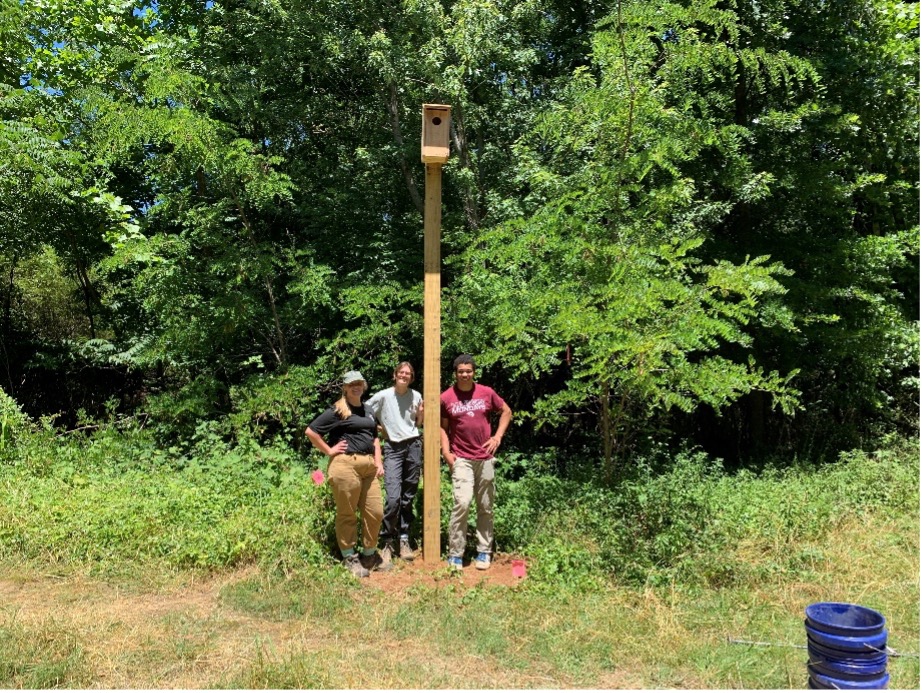
Environment Center Scholars (Abby Reed, Julianna Morrow, and Nick Cook) right after they installed this owl box June 2024 (Photo Credit Rachel Collins)
What would you say were the instrumental steps that made the EC a reality?
We developed a leadership team that included four faculty members and the director of grounds for the college. His support and work have been crucial for the EC’s success. Next we worked on a mission and vision statement. Crafting it took several meetings but it was essential for us to discuss what the EC was and to articulate it. As it grew, we would return to the mission and vision statement to make sure that what we were doing fit. The third thing that was necessary is communication among the leadership team and our ability to truly listen and collaborate.
What are the milestones and successes that you have had building the EC?
We were very fortunate to earn a grant from the Virginia Environmental Endowment that funded the restoration of the fill site into a native grassland meadow. This grant also funded our Environment Center Scholars program (a summer research experience for students) for three years and K-12 environmental literacy programming. Next, we earned a National Wildlife Federation and the Mutual of Omaha Wild Kingdom College and University Grant to fund wildlife habitat restoration, student research, and a community environmental literacy event. Additionally, we have our first publication that describes the restoration work and our use of adaptive management. This article was first-authored by a student. We have also gotten the attention from the media and have had several stories done about the EC on local and regional TV, newspaper, and digital platforms.
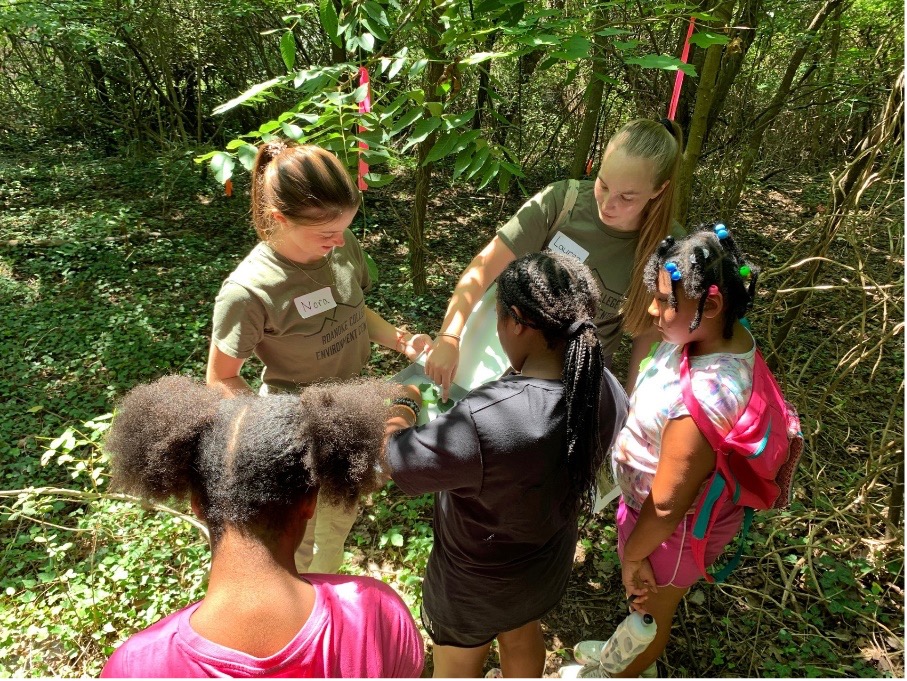
Environment Center Scholars (Nora Terrill and Lauren Young) working with middle school students at an Environmental Literacy event July 2023 (Photo Credit Rachel Collins)
How has the creation of the EC impacted student experiences?
It has been transformative. Students have been involved at all stages except driving bulldozers. There are three venues through which students are involved at the EC: Research, environmental literacy programing, and service learning. Additionally, we have developed what we call the Environment Center Scholars program.
First, Students worked with faculty to collect pre-restoration environmental data. In some cases, groups of students come together to help out a faculty member who is the lead. On top of that, nearly 20 students have completed independent research projects including writing theses and presenting their work at conferences. Several Environmental Studies and Biology classes have used the EC as an outdoor laboratory.
Second, faculty mentor students to develop K-12 and community environmental literacy programs. For three summers now, they have put on a day-long programs for middle schoolers from underserved neighborhoods. During the academic year, college students host high school students for an afternoon focused on environmental science. And students have put on an event for people in the community to learn how they can improve the wildlife habitat in their yards.
Third, we have partnered with service groups on campus and have held events where students do restoration work of weeding invasive species, planting native species, building fences and installing nest boxes. More than 100 students have participated in these events.
Lastly over the past four summers we have run our Environment Center Scholars program. Students participated in an 8-week immersive summer program. Students work on their own environmental research or community project and help other students complete their projects. They work closely with faculty mentors developing the environmental literacy programing I talked about earlier. During this time, we become a community of environmental learners and doers.
Through all of this, I have been privileged to give students opportunities to develop skills and confidence in real world situations. I feel like we are putting them into a great position to be tomorrow’s environmental leaders.
If you want to learn more check out our web page and a video I made of the meadow restoration.
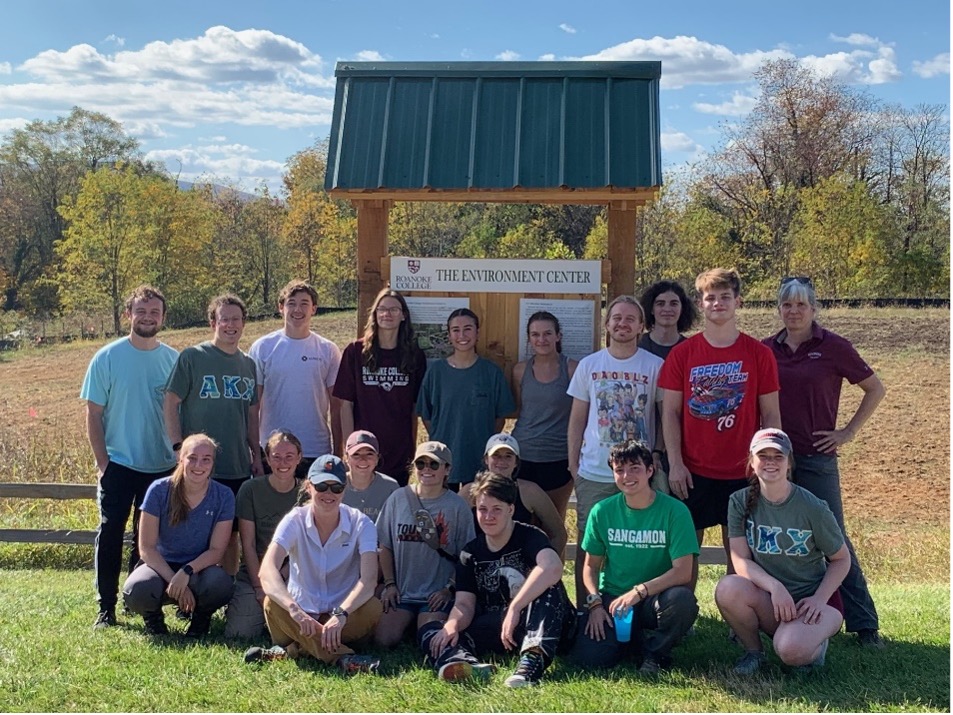
Student volunteers and faculty who planted the meadow with native species in October 2023. (Photo Credit Katherine O’Neill)
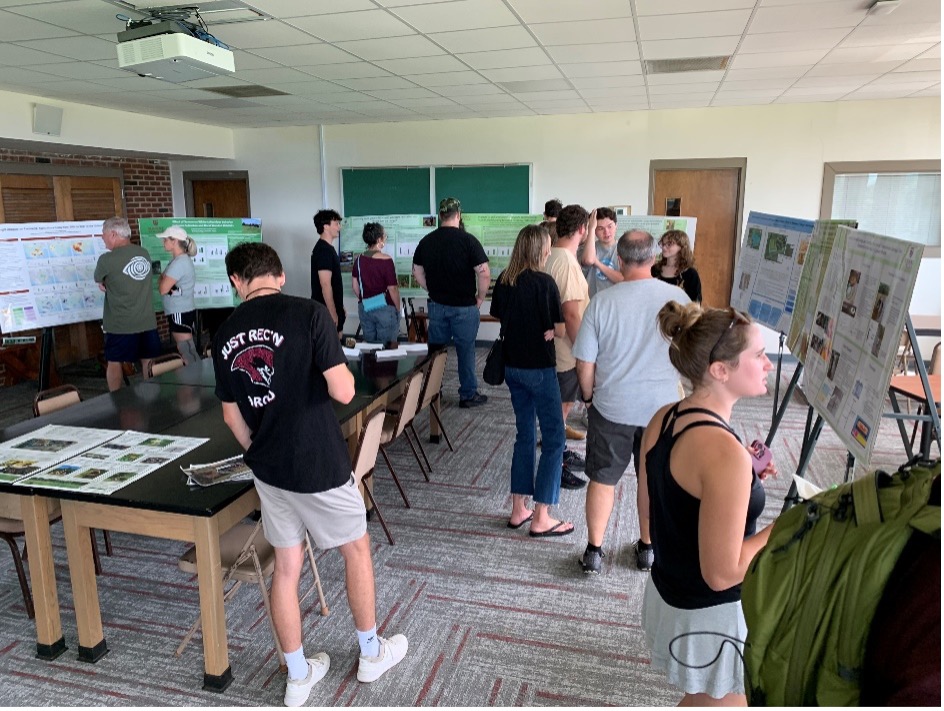
Students present their research at the Environment Center during Family Weekend, September 2024 (Photo Credit Rachel Collins)

